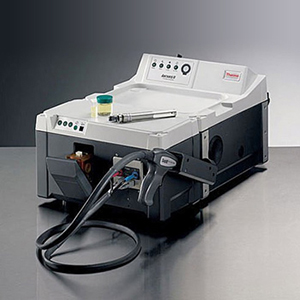NIR Technology

Near-infrared (NIR) chemical analysis technique is a small piece of a big cake, a large part of study known as spectroscopy.It is associated with the fundamental interaction between matter and radiated energy to achieve specific research. NIR analysis calibers the wavelength and vividness of radiated light.
This spectroscopic method acting exploits the near-infrared region of the electromagnetic spectrum that ranges anywhere between 800 nm to 2500 nm. Moreover, this analysis technique is widely used in various industries because it is capable of giving exact measure and negative results. Since organic materials such as agricultural products and foods can be safely assessed, NIR technology is widely used in the textile, pharmaceutical, and petrochemical industries.
Certainly, this technology has also resolved the most common concerns in paper production. It has enabled manufacturers to monitor the moisture content and weight of materials under online conditions. This ways, paper manufacturers are able to maximize their raw materials and improve production overall. NIR method can help them handle well the incoming timber materials and lignin content.
The near infrared spectroscopy is an advantage for pulp and paper businesses since this can allow them to determine condition and species of their organic materials. Hardwoods can be separated from soft ones because the NIR research technique can detect cellular differences through their radiated light facility. In the same way, this allows them to split the sapwood from the harder heartwood part of the trunk.
Chemical pulping procedures also include some lignin-removal processes. With the aid of near infrared analyzers, manufacturers were able to treat all types of wood chips effectively despite varying sizes, thickness, as well as lignin count and concentration. Because they are able to reduce the right amount of lignin content, these pulp and paper plants can certainly prevent the problem of non-homogeneity in their materials.
Furthermore, as countless paper mills make their transition from manual titration-based methods to cutting-edge Fourier Transform-Near Infrared (FT NIR) technology, they have managed to automate most of their production processes. This more sophisticated chemical testing system has enabled them to progressively measure the innate properties of their raw materials throughout their entire plantations. Through the enhanced NIR spectroscopy, these businesses truly experience improved reliability, source-efficient productions, and significant cost savings.








